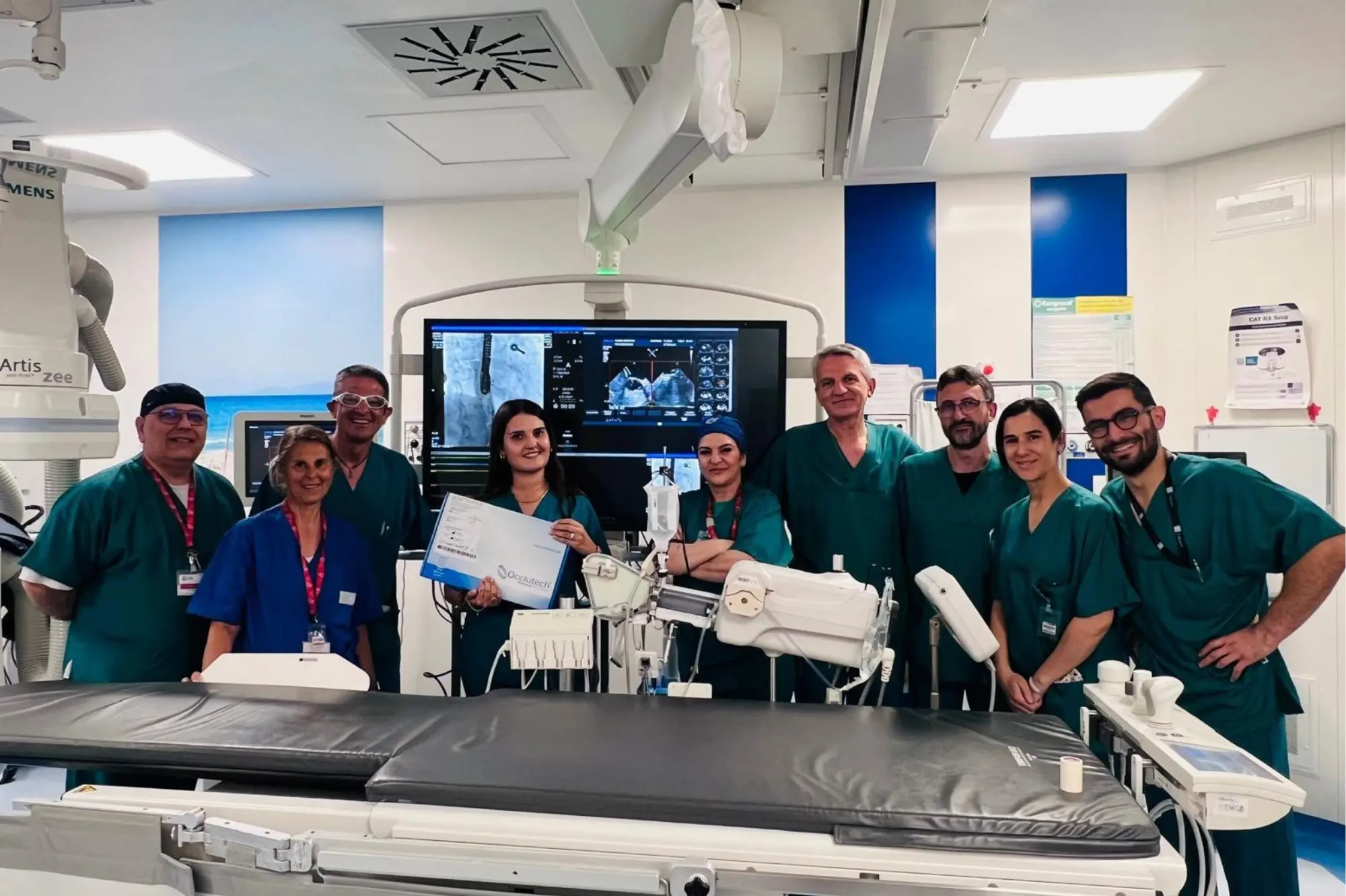Aou Cagliari, cardiac anomalies: two interventions at the Policlinico of Monserrato
These are procedures to close a congenital condition that can increase the risk of stroke.Per restare aggiornato entra nel nostro canale Whatsapp
The first two procedures for the percutaneous closure of patent foramen ovale (PFO), a congenital condition that can increase the risk of stroke, even in younger patients, were performed at the Duilio Casula Polyclinic in Monserrato. The procedures were performed in the Interventional Cardiology room, with teamwork involving interventional cardiologists, sonographers, nurses, radiology technicians and anesthetists.
The team, led by Dr. Mauro Cadeddu, head of Hemodynamics, worked with the support of Professor Roberta Montisci, director of Cardiology-Utic, and under the supervision of Professor Massimo Chessa, head of the Pediatric and Adult Congenital Cardiology and Hemodynamics Center at the IRCCS Policlinico San Donato. Chessa is associate professor of Cardiovascular Diseases at the Vita-Salute San Raffaele University, one of the leading Italian experts in structural cardiology . The collaboration of the Anesthesia and Resuscitation department, represented by Dr. Gian Nicola Aru, was also fundamental.
Patent foramen ovale (PFO) is a cardiac anomaly: a passageway connecting the right atrium to the left atrium of the heart that serves during fetal life, but usually closes after birth . However, in about 20-25% of the population it remains open, without causing symptoms in most cases. Percutaneous closure of the PFO is now the recommended strategy to prevent new episodes in patients between the ages of 18 and 60, affected by cryptogenic stroke, or without apparent cause. The "gold standard" intervention consists of inserting, through a vein, a device that closes the foramen ovale and prevents clots from passing from the right atrium to the left atrium, thus avoiding serious complications such as strokes, even in young people.
(Online Union)
